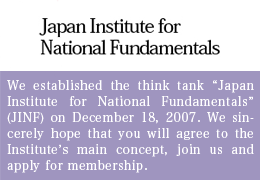The Prime Minister Incapable of Concentrating All of His Nation’s Resources to Overcome This Colossal National Catastrophe
In times of emergency, such as the disastrous earthquake and tsunami that hit northeast Japan on March 11, Japanese nuclear plants are instructed to abide by three towering rules:“stop (the reactors), cool (them), and contain (the radiation.)” However, only rule 1 - “Stop the reactors” - has so far been implemented.
In a series of special reports on the havoc wreaked by the colossal quake and tsunami, Time Magazine in its March 28 issue referred to Japan as “the only country on the planet with an earthquake early-warning system in place…(and) with a truly successful tsunami-alert scheme.” The magazine indicated that the reactors in question have fundamentally performed their expected functions, observing: When the reactors at the Fukushima Daiichi complex stopped and the buildings housing them exploded, they “did exactly what they were supposed to do” in that they “released the pressure and protected the core.”
Japanese and foreign media unanimously agree that the damage from the tsunami far surpassed any predictions. The toll is expected to ultimately rise to tens of thousands. An examination of 126 of the victims in the northern Iwate prefectural city of Rikuzen Takata estimated that roughly 90 percent of them had been drowned. Although many of the 6,434 victims of the Great Hanshin Earthquake of January 17, 1995 perished in extensive fires that followed the quake, it was a gargantuan tsunami that claimed the lives of an overwhelming number of the victims of the Great East Japan Earthquake of March 11, 2011.
As Japan struggled to withstand the ordeal, a New York Times article entitled “The Japanese Could Teach Us A Few Things,” written by Nicholas Kristof, caught my attention.
Kristof, who served as the daily’s Tokyo bureau chief for five years during the 1990s, is an able journalist well versed in Chinese affairs, and a two-time recipient of the coveted Pulitzer Prize, considered the greatest honor in U.S. journalism. As the author himself admits, he was sometimes perceived as hostile to Japan, and I believe he has a pro-Chinese bias. As regards the Senkaku incident, Kristof asserted in his blog that the Chinese claim has the edge on Japan’s, and brushed aside a refutation by the Japanese government as “unconvincing.” However, he claims his criticism of Japan is directed at “the Japanese government’s incompetence and duplicity,” stressing:”But the truth is that I came to cherish Japan’s civility and selflessness.”
The same Kristof now calls on Americans to learn something from the Japanese. Describing those at the Fukushima plant as engaged in varied repair operations “uncomplainingly and anonymously” with a sense of “selflessness, stoicism, and discipline,” Kristof wrote that these men are risking their lives to face up to the ordeal, trying frantically to prevent the disaster from endangering their fellow citizens.
Compared to the great resourcefulness of the people of Japan, whom even a foreign journalist known for his harsh view of Japan commends, the series of emergency “countermeasures” worked out by the Japanese government have grossly been incompetent, insufficient, and disappointing. The government’s response has bordered on national shame for a country that has ample resources to help the victims and speedily rebuild the affected areas given the right leadership. As of March 22 - eleven long days after the disaster struck - Prime Minister Naoto Kan has yet to convene the National Security Council or Central Disaster Prevention Council. Ordinarily, National Security Council sessions should have been held and a state of emergency declared under articles 71 and 72 of the Police Law. Unbelievably, however, they have yet to be convened, and, consequently, no fundamental framework has been worked out to probe and implement effective measures to overcome the worst national catastrophe in the modern history of Japan.
Root Cause: Dysfunctional Prime Minister’s Office
In Japan, there are three laws that grant the prime minister the prerogatives to take action in times of national emergency: (1) the afore-mentioned National Security Council and Police Law; (2) Article 76 of the Self Defense Forces Law which equips the prime minister with the right to mobilize SDF force for the defense of the nation; and (3) Article 28 of the Disaster Management Basic Law, which empowers the premier to set up an Anti-Disaster Headquarters. Points out Atsuyuki Sassa, who served as the first head of the Cabinet’s Security Affairs Office (1986-89) and is one the nation’s leading authorities on crisis management:
“When the National Security Council is convened, the prime minister and all the ministers concerned, including the chief cabinet secretary, the foreign minister, the defense minister, the minister of economy, trade and industry, are called together. Bureaucrats work under the directives of each of these ministers to mete out urgent measures, such as: rescuing and protecting the victims speedily; developing countermeasures needed to cope with the disaster at the nuclear plant; and thoroughly investigating what goods and materials, as well as services, are needed for such operations, while determining where in Japan these supplies can be found and how much is available.
“Next, recommendations are made to the prime minister based on what is considered the most efficient and quickest means of delivering these supplies to the areas requiring assistance. That is how a system is born, enabling the nation to give everything it has to disaster relief and rebuilding operations. It is the prime minister’s responsibility to carefully scrutinize the recommendations and make the final decisions.”
Mr. Kan has vowed that his government will pour everything the nation has into such operations. But he has failed to come up with the right system for making such operations work. As a result, practically every measure his government has work out to cope with the disaster has been a day late and a dollar short.
Let us take the injection of sea water, for instance - which constituted a step of critical importance as a means of reducing the temperature inside the reactor pressure vessels and suppression pools. First, an attempt by Air Self Defense Force’s helicopters to douse the reactors with sea water from above failed; then an operation to use Metropolitan Police water cannons to douse the reactors did not produce the desired effects due to a lack of precision in the hosing; and finally, dousing by several teams of firefighters was also not at first satisfactory. As the last resort, an emergency team of veteran firefighters, centering around members of the Hyper Rescue Squad of the Metropolitan government, was brought in. We all know that it is only thanks to the selfless dedication and hard work of these men that a larger crisis has been thus been averted.
Actually, this matter falls under the jurisdiction of the Ministry of Internal Affairs and Communication. The Hyper Rescue Squad was only brought in on March 19 - eight long days after the reactors were damaged by the quake and tsunami. Had the National Security Council been convened swiftly, every available means there is in Japan could have been utilized early enough to possibly ease the crisis at the Fukushima plant.
Prime Minister Kan did set up the Emergency Anti-Disaster Headquarters referred to earlier, which itself should be given due credit. But, due to his failure to come to grips with the nature as well as the significance of the Disaster Management Basic Law, Mr. Kan has miserably failed to produce results. Why didn’t the prime minister take more control of the supply chain across Japan, prioritizing shipments of goods and supplies to the stricken areas? He should have done so before Minister Renho, in charge of government revitalization, appealed to the nation to refrain from hoarding goods.
Against such a backdrop there are those who have been playing their parts resolutely - members of the Self Defense Forces, police officers firefighters - all working around the clock in affected areas across northern Honshu, including the ill-fated Fukushima plant. But there is no guarantee that even the great capabilities of these men are being utilized most efficiently, even though some of them are braving radiation in an effort to fulfill their responsibilities. The root cause of the problem is the Prime Minister’s Office, which is appallingly dysfunctional, making for grossly insufficient liaison between the ministries and agencies concerned.
Rule of Forces of the International Community
Meanwhile, as various nations have stood up to aid Japan - for which we are most grateful - the sudden appreciation of the yen to 76.25 yen on March 17 reminded us that the international community is not ruled by kindness alone. The spike was due to speculators, such as hedge funds, expecting Japanese corporations needing cash for reconstruction efforts to close down overseas bets and bring their money home. The international community does indeed offer a helping hand to nations seriously battered by a natural disaster, but we must also be aware that in the same community there are elements ready to take advantage of the situation for their own gain.
This is all the more reason for the Japanese government to exercise maximum caution when it disseminates information regarding the troubles at the Fukushima Nuclear Power Plant, domestically and internationally. While the government must naturally try and do its utmost to make all of the information it sends out as thoroughly open as possible, dissemination of highly sensitive information can very well backfire unless the government has the presence of mind to do it logically and objectively.
One typical example is the directive issued by the prime minister on March 21 on the ban on shipments of spinach and “kakina” (a leafy green vegetable) from Fukushima, Ibaraki, Tochigi and Gumma prefectures, as well as raw milk produced in Fukushima. The ban was enforced despite the government’s public announcement which was marked by a stunning contradiction - “(Even if eaten) these items will not be harmful to the human body.”
Explained Chief Cabinet Secretary Yukio Edano during an evening news conference on the same day: “The ban is in keeping with the government’s very conservative and rigorous food safety standards. To put it differently, everything you see in food markets in this country today is absolutely safe.”
If that really is the case, the prime minister should have made maximum efforts to stress this point about safety when he first decided on the ban. Otherwise, such information has a high possibility of giving the impression abroad that the damage Japanese are actually suffering from radiation is many times more serious than it actually is, which unduly raises doubts about the credibility of Japanese nuclear technology in general.
There appears no question that the trend towards construction of more nuclear power stations will lose considerable ground. However, there will be a day when nuclear power generation will once again attract attention as a workable measure against global warming. As matters stand today, one cannot ignore the fact that some other nations that rely heavily on nuclear power generation, such as France, have been critical of Japan’s nuclear technology in an attempt to create an international environment favorable for their own technology.
Already, a fierce struggle is developing below the surface. Understandably, everything that has to do with nuclear power is in utter chaos in Japan today. Once this crisis is over, all nuclear issues will have to objectively be reviewed on a long-term and strategic basis.
(Translated from “Renaissance Japan” column no. 454 in the March 31, 2011 issue of The Weekly Shincho.)








